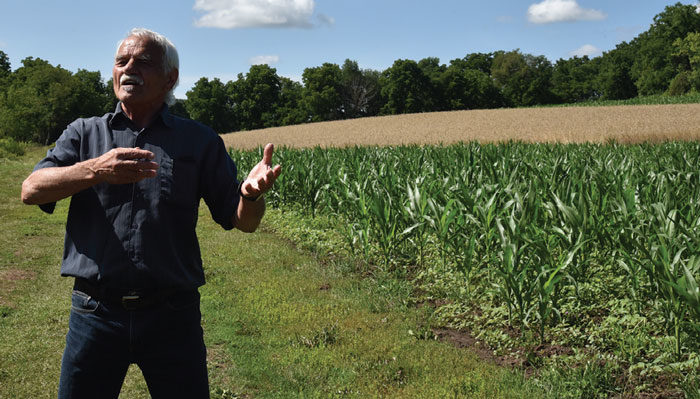No-Till Farmer
Get full access NOW to the most comprehensive, powerful and easy-to-use online resource for no-tillage practices. Just one good idea will pay for your subscription hundreds of times over.

Gary Zimmer, who farms in Spring Green, Wis., has seen success and improved soil health with a two-crop rotation of cereal rye and corn. Photo by: Michaela Paukner
Regenerative agriculture has many different definitions. Practices such as no-till, cover crops, grazing and other soil health improvement strategies are often placed under different umbrellas of conservation agriculture, sustainable agriculture and several other similar titles. But according to Wisconsin grower Gary Zimmer, who many refer to as the “father of biological farming,” regenerative is not the best word for it
“I call it biological farming because I want people to focus on the life in the soil,” Zimmer says. “The definition of regenerative depends on who you talk to.”
No matter what you call it, the idea of minimum soil disturbance is typically at the center of the definition. But Zimmer isn’t strictly talking about tillage when he uses the term soil disturbance. In fact, he doesn’t believe that no-till is the most important part of conservation agriculture.
“If you want to talk about minimizing soil disturbance, we have to talk about several different things,” Zimmer says. “Chemicals are a disturbance, monoculture is a disturbance, salt fertilizers are a disturbance, and tillage is a disturbance. Pick your poison.”
Zimmer says no-till is simply a practice, while soil health is a concept that involves many factors and requires a farmer to focus on the big picture. While he agrees that no-till is a good soil health practice, he says focusing only on no-till misses the point.
“People don’t understand the definition of soil fertility. We call dumping fertilizer on the land fertility…”
“To have good soil health, you need plant diversity…